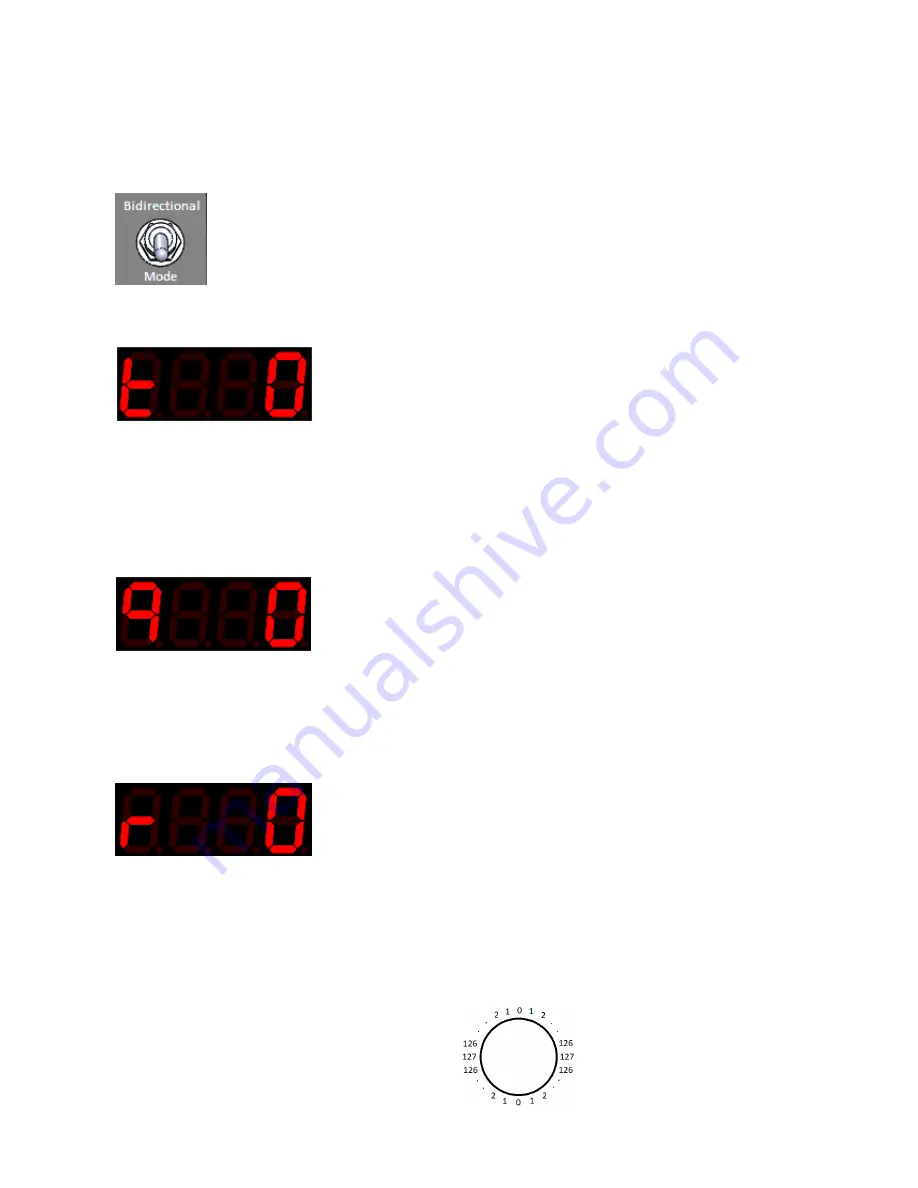
15
© Oz inventions
Version 1.8
Controls
Modulation mode switch
The mode switch is a momentary toggle switch. It is toggled forward and then released. The mode switch
selects between modulation modes.
The modulation modes are tilt, quad tilt, rotation, velocity, Flick automatic and playback.
Tilt (t)
Default angle 0 – 90 degrees; Range 0 – 90 degrees;
Default orientation – Top; Range – Top, Bottom, Left, Right, Front & Rear
This mode is designed for tilting and rolling in a single direction or two directions if the bidirectional switch is
used. Calibration is usually required before use
.
Quad tilt (q)
Default useable angle 0 – 90 degrees in four directions; Range 0 – 90 degrees in four directions; Default
orientation – Top; Range – Top, Bottom, Left, Right, Front Rear
This mode is designed for tilting and rolling in any direction. Calibration is usually required before use.
Rotation (r)
Default 0 – 90 degrees; Range 0 – 36000 degrees;
This mode is designed for rotational movement such as side to side swaying or swinging, as maybe done
when playing a guitar, dancing or other circular movement.
Calibration is usually required before use.
See Rotation calibration process pg 30
The bidirectional switch allows a continuous circle
















































